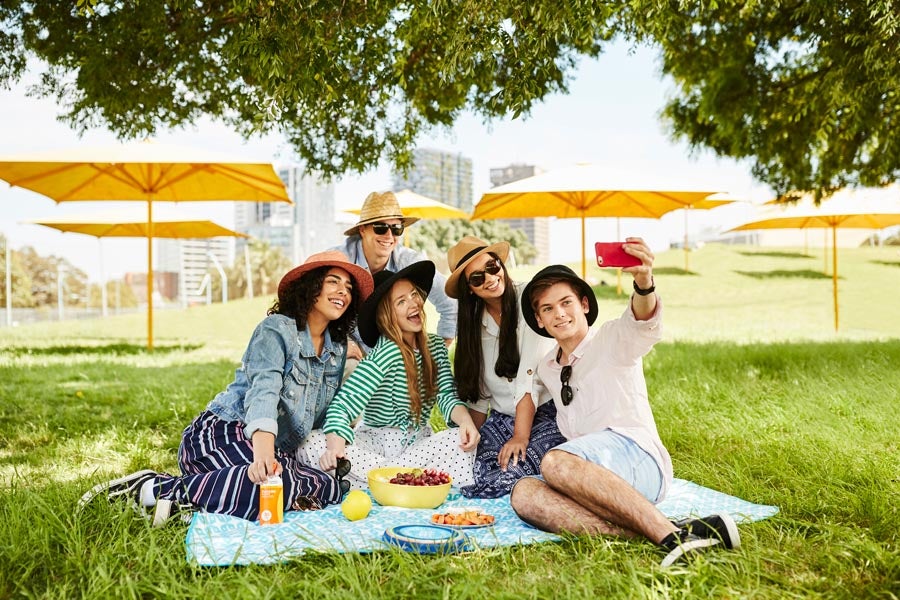Sun protection 101: essential tips from Cancer Council for UV safety
10 facts about sun protection by Cancer Council

1. Cloudy day sun safety.
Sun damage is caused by ultraviolet (UV) radiation, not temperature - meaning you can still damage your skin when the sun isn’t out. In fact, UV radiation can penetrate clouds and can even be more intense due to reflection from them.
If it's windy and you get a red face, it's likely to be sunburn. There's no such thing as ‘windburn’.
Check the daily sun protection times which show when the UV is forecast to be 3 or above. You can find this information online in our SunSmart module or the Bureau of Meteorology, in the weather section of newspapers, or on the free SunSmart app.
2. There’s no such thing as a ‘safe’ tan.
If skin darkens after exposure to the sun, it is a sign of skin cells in trauma, even if there is no sign of redness or peeling.
Skin darkens as a way of trying to protect itself because the UV rays are damaging living cells. Even if you can tan easily, you are still at risk of skin cancer and need to use sun protection.
3. Cosmetic SPF caution.
Unless cosmetics are labelled with an SPF50 or SPF50+ rating, you should wear additional sunscreen under your makeup if you're going to be in the sun for an extended period. Best practice is to reapply your sunscreen every two hours – not just once in the morning underneath your makeup.
Be mindful that most cosmetic products offer either no protection or protection that is much lower than the recommended SPF50 or higher.
4. Any skin tone can be at risk of skin cancer.
Regardless of skin type, exposure to UV radiation from the sun and other artificial sources, such as solariums, can cause permanent damage to the skin.
People with skin types that are less likely to burn can still receive enough UV exposure to risk developing skin cancer.
5. SPF versus time in the sun.
Sunscreen is not a suit of armour and should never be used to extend the amount of time you spend in the sun.
Though it may sound like there is a big difference, SPF50+ only offers marginally better protection from UVB radiation, which causes sunburn and adds to skin cancer risk. SPF30 sunscreens filter about 96.7% of UV radiation, SPF50+ sunscreens filter 98% of UV.
Cancer Council recommends applying a sunscreen that is SPF50 or SPF50+ before heading outside, every two hours, after swimming, sweating, or towel drying.
6. Sun and vitamin D balance.
Research suggests that prolonged sun exposure does not cause vitamin D levels to continue to increase further but does increase the risk of skin cancer.
When UV levels are 3 or above, most Australians get enough vitamin D with just a few minutes of sun exposure while completing everyday tasks - like walking to the car or shops. During peak UV times, it's important to reduce your risk of skin cancer by protecting your skin.
If you live those parts of Australia where UV levels are low in winter, you can help maintain vitamin D levels by spending time outdoors in the middle of the day and doing some physical activity. People who may be at higher risk of vitamin D deficiency include:
- people with naturally very dark skin
- people with conditions or medications that impact vitamin D absorption
- those who cover their skin for religious or cultural reasons
- those with little or no sun exposure.
If you believe you're at risk of vitamin D deficiency, speak to your doctor.
7. Skin cancer awareness.
Skin cancer treatment can be much more serious than ‘simply’ having a lesion removed. It can include invasive surgery and chemotherapy, which can result in permanent scarring, as well as the need for long-term monitoring.
It is important to remember that skin cancer can also spread to other parts of your body. Each year, more than 2000 Australians die of skin cancer.
Be alert for any new spots or changes to existing spots and consult your GP immediately if you notice anything new or changing. And remember, prevention is always better than cure.
8. Fake tan doesn’t equal sun protection.
Fake tanning products do not improve your body's ability to protect itself from the sun. Though some fake tans have an SPF rating, this should not be relied on for continued protection.
9. UV radiation can penetrate car windows.
Untinted glass commonly used in car side windows reduces but does not completely block transmission of UV radiation.
This means you can still get burnt if you spend a long time exposed to an untinted side window when the UV is high. More commonly, people get burnt in cars with the windows down, where they can be exposed to higher levels of UV radiation. Burning also adds to the cumulative effect of UV exposure, which can lead to skin cancer.
10. Anyone can get skin cancer.
In a high UV environment like Australia, we can be exposed to dangerous levels of UV radiation during all sorts of daily activities, such as working outdoors, gardening, walking the dog or having a picnic. This sun exposure adds up over time, increasing the risk of skin cancer.
Learn more about how to be SunSmart
